Cycling glasses are a key part of a cyclist’s kit and an essential accessory for any ride.
The best cycling glasses shield the eyes from wind, rain, branches and rogue flying insects, and can aid visibility in low or bright light, depending on the lens.
Unfortunately, standard cycling eyewear is of little use to those who require vision correction and are unable to wear contact lenses. That’s where purpose-built prescription cycling glasses (often referred to as ‘Rx’ cycling glasses) can help.
Prescription cycling glasses come in many forms, but they all have the same goal: to protect the wearer’s eyes and provide vision correction in order to get the clearest possible picture of the road or trail ahead.
If you’re thinking about investing in some cycling-specific prescription eyewear of your own, then you’ll find everything you need to know right here.
Do I need prescription cycling glasses?
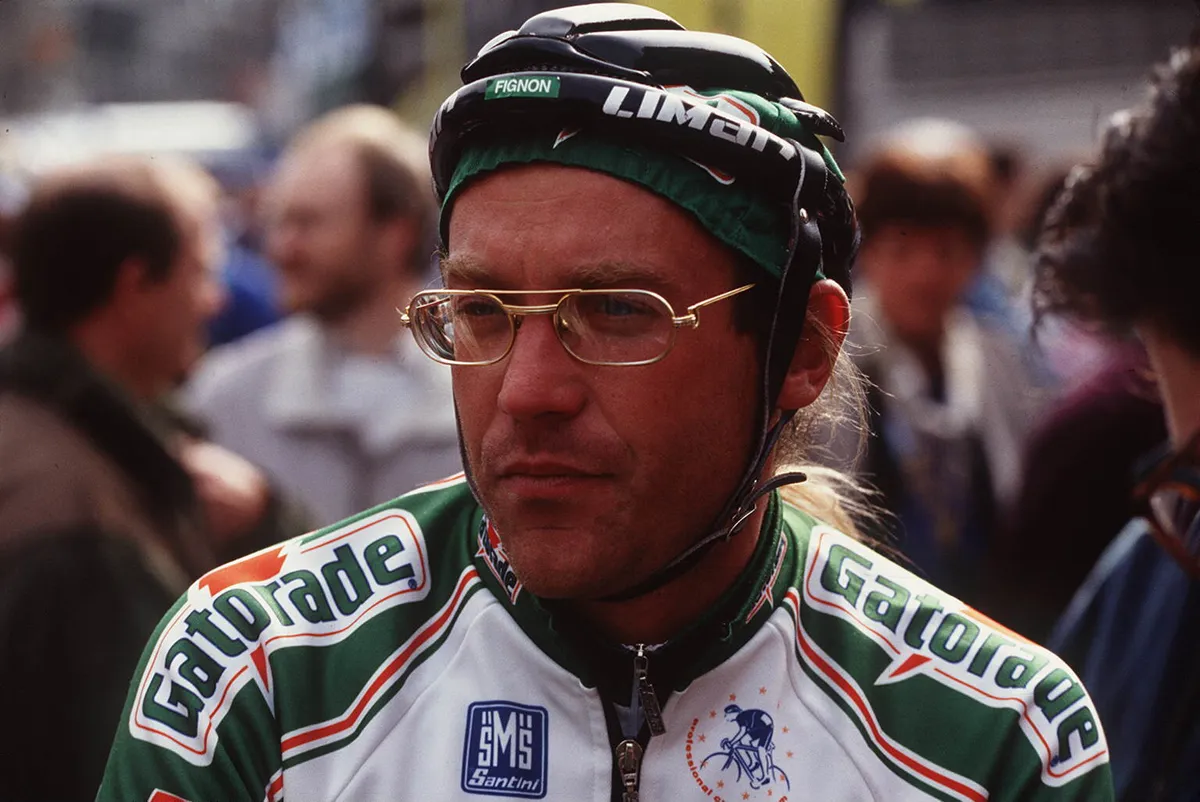
If the aim of the game is to correct the vision and protect the eyes, then you may be tempted to make do with your everyday distance glasses.
This is a perfectly workable solution – Laurent 'Le Professeur' Fignon certainly proved that – and something that many people are happy to do.
However, prescription cycling glasses are the superior option for a number of reasons, according to Wolfgang Fink, Rx product manager at uvex sportstyle.

“First of all, it’s the material,” Fink tells BikeRadar. “At uvex, we use shatter-proof frames and lenses. If you’re wearing regular glasses and get hit by a branch or a stone, they are much more likely to break.
“Secondly, the wraparound shape of a sport frame offers better protection from things like wind, bugs and dirt, and gives you a nice, wide field of vision.
“Sport frames also have soft rubber nose pads and arms. This aids comfort, and also ensures the glasses stay in place while riding and don’t fly off if you make a sudden movement with your head.”
What types of prescription cycling eyewear are available?
Prescription inserts (indirect glaze)
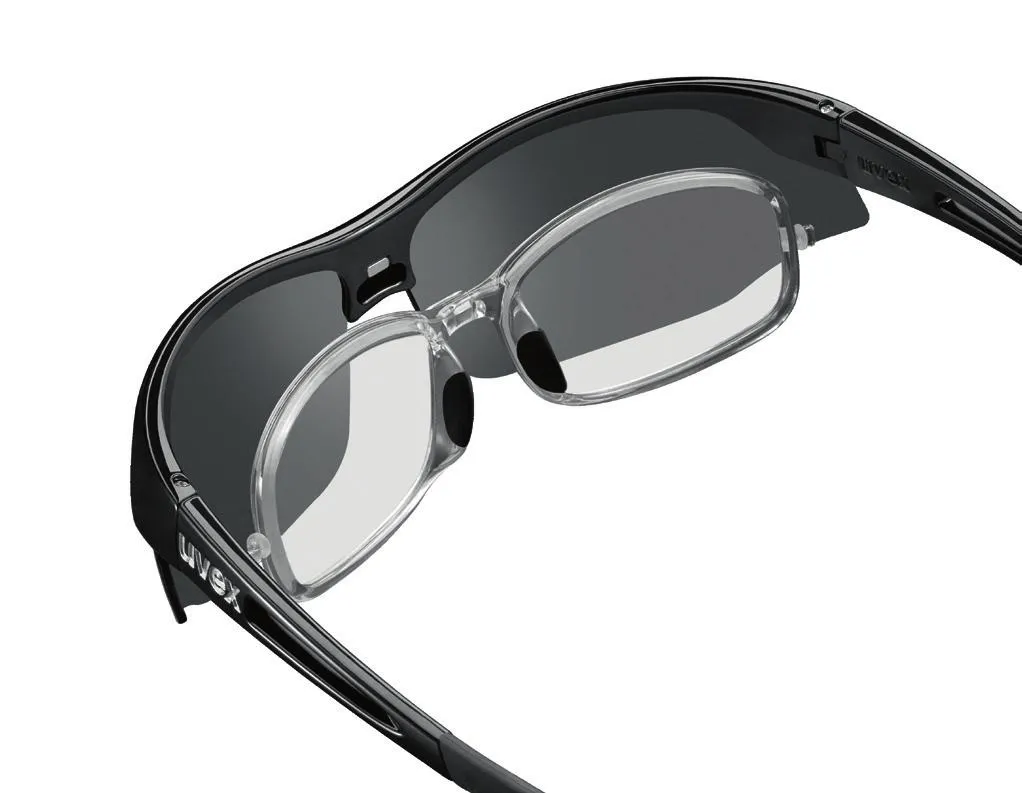
Prescription inserts clip into a regular pair of cycling glasses to enable the wearer to see clearly. They’re the most cost-effective solution for bespectacled cyclists, but they aren’t without their drawbacks.
“One benefit of indirect glazing is that interchangeable lenses are possible,” says Fink. “A clip-in insert is also better for those with strong prescriptions, as it’s not always possible to cater for this with a direct glaze.
“There is also the option to remove the insert and use the glasses without them. This is handy if you sometimes like to wear contact lenses, or if you need to lend the glasses to someone else. This isn’t possible with direct glazing.
“Most of the time, the price of indirect glazing is lower too.”
Unfortunately, clip-in inserts tend to be proprietary. There’s no one-size-fits-all solution and brands tend to only offer inserts for a very limited selection of their frames. Even a style as popular as Oakley’s Sutro, for example, is impossible to get an insert for without having one custom-made.
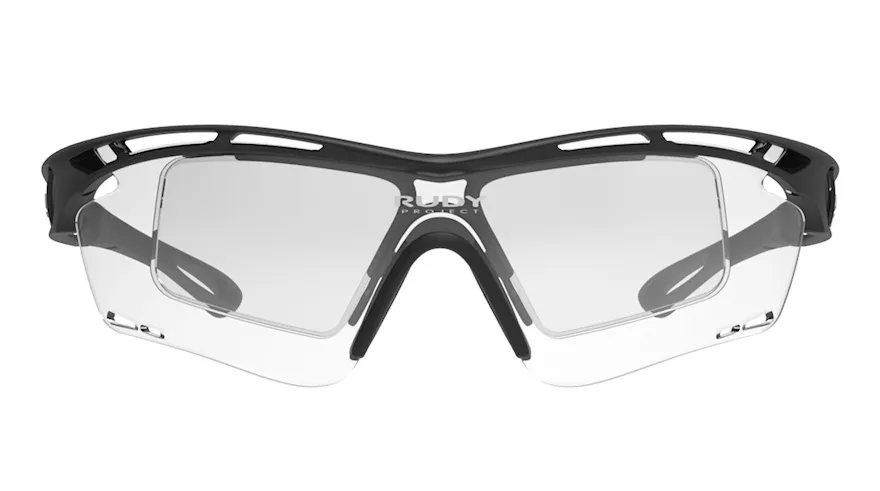
Another downside is the weight penalty. It’s not enough to slow you down, but it can cause the glasses to slip down the nose, which quickly becomes annoying on long rides.
Using an insert also decreases the cornea-vertex distance (the space between the lens and the surface of the eye). This can cause issues with eyelashes rubbing on the inside of the lens, making it dirty.
Prescription cycling glasses (direct glaze)

Direct-glazed glasses are the most fuss-free option, but also the most expensive.
They’re just like a regular set of cycling glasses, but with lenses specially made to provide the required level of correction.
“This type of eyewear offers the best field of view,” explains Fink. “There is no insert to restrict the vision and there is also less in the way of glass reflection, which can be a problem with inserts where you have one lens behind another.”
A direct glaze tends to be more comfortable too. The absence of an insert means that not only are they lighter, but the cornea-vertex distance is as it should be.
The main drawback is the price. It’s not uncommon for direct-glazed options to be twice the price of their indirect-glazed counterparts. Plus, if you have a particularly strong prescription, the frame may not be able to accommodate the weight and thickness of the lens.

Shield-lens lovers are out of luck too, according to Rudy Project's resident Rx expert, Roberto Casarin.
“It is not possible to make shield-lens glasses suitable for those who need vision solutions,” Casarin explains. “Because this kind of eyewear has a single lens, there would be clear difficulties in making different thicknesses and geometries for each eye.”

That said, Oakley’s Shield Implant technology could be a solution. The Jawbreaker, for example, is available with prescription lenses that are fused into the shield itself.
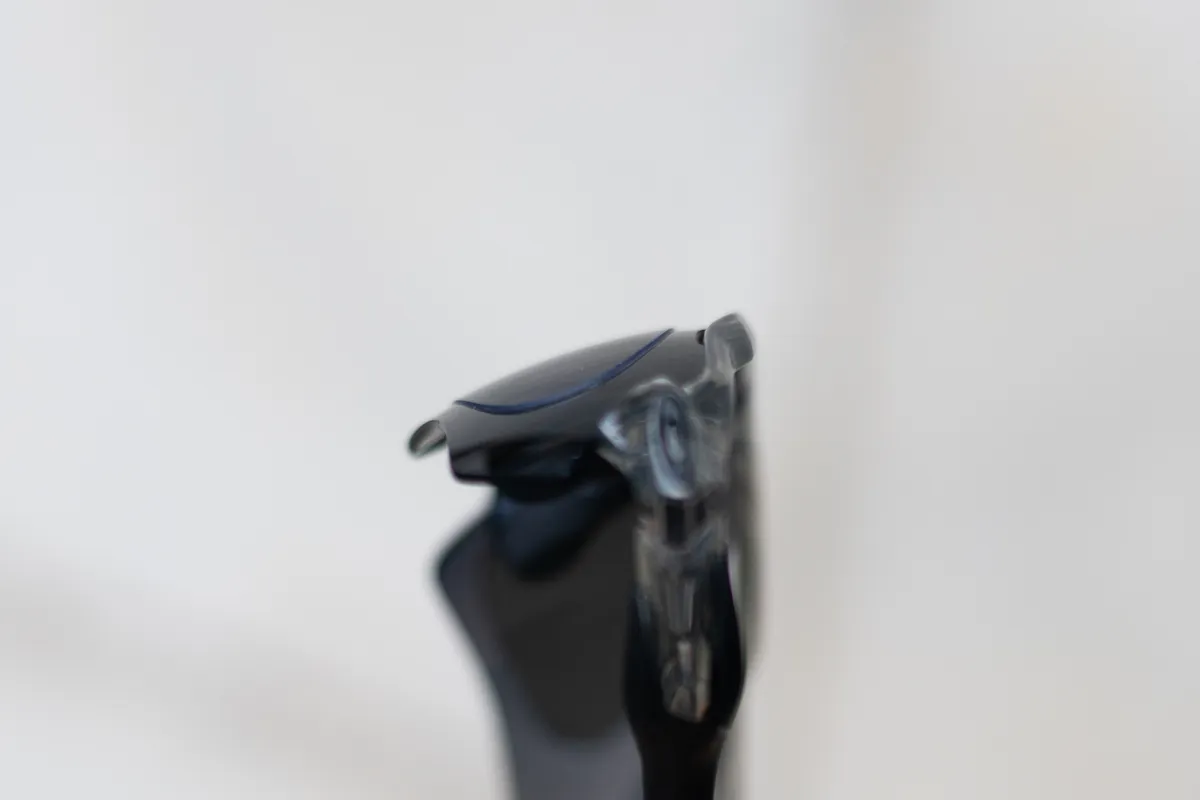
It’s not a direct glaze in the truest sense of the term, but it’s the best that current technology can muster for those who are dead set on a one-piece prescription lens.
Hybrid prescription cycling glasses

Some brands offer options that sit somewhere between a direct-glaze and a prescription insert. The idea behind these ‘hybrid’ glasses is to cater for cyclists with very strong prescriptions, for whom standard glasses or inserts won’t suffice.
Rudy Project’s Optical Dock system, for example, is designed specifically with strong prescriptions in mind and may be a good option if you need substantial vision correction.
“The Optical Dock uses a lens mounted in a solid plastic structure and can be mounted in all types of ophthalmic materials (polycarbonate, high index, etc),” Casarin tells BikeRadar.
The lenses clip directly into a compatible frame, making it possible to have a much thicker lens than would be possible with an insert or a direct glaze.
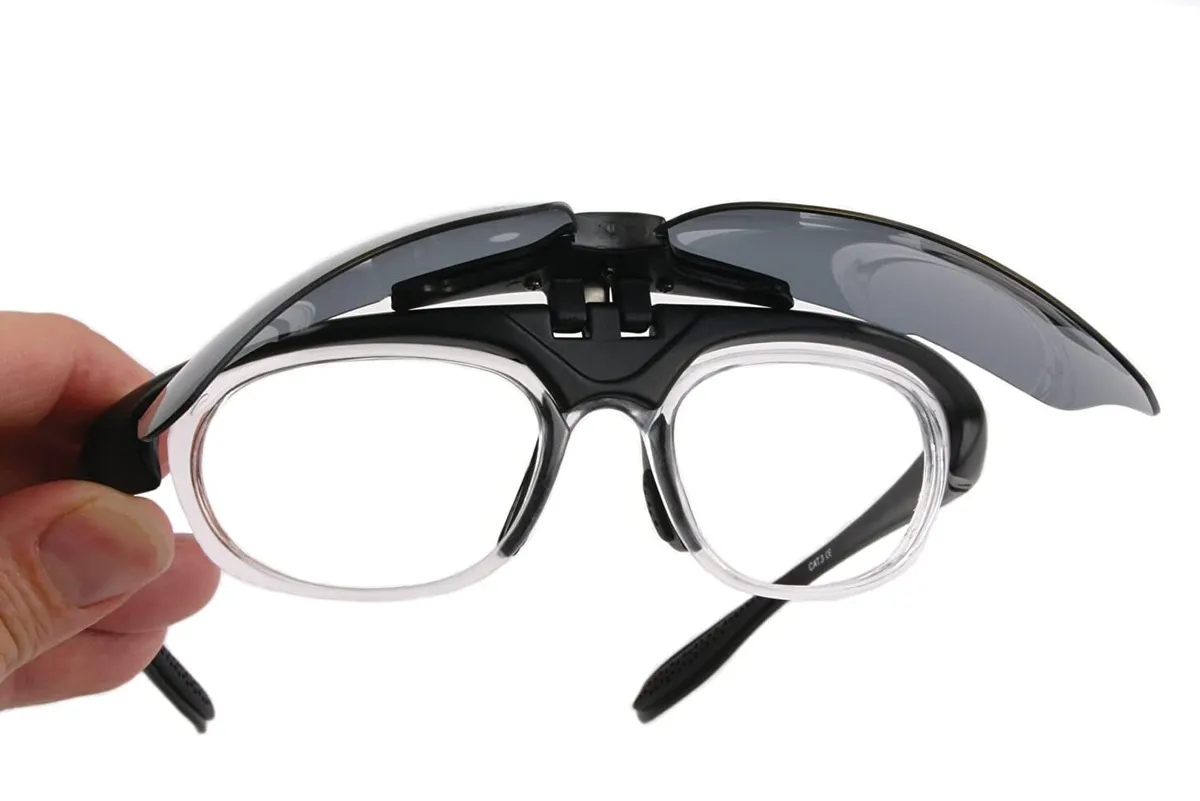
Flip-up glasses are another option. These feature an inner prescription lens and an outer tinted lens, which can be flipped up when not needed. It’s a simple solution to dealing with varying light conditions out on the road, but comes with many of the same drawbacks as a clip-in insert, such as increased weight and issues with reflections due to the double-lens design, which could be distracting.
“The main advantage of the flip-up is the immediacy of the coverage from the sun,” adds Casarin. “It works instantaneously, like a switch, while photochromic protection has a reaction time that is not immediate.”
Buyer’s guide to the best prescription cycling glasses
How to choose a lens tint
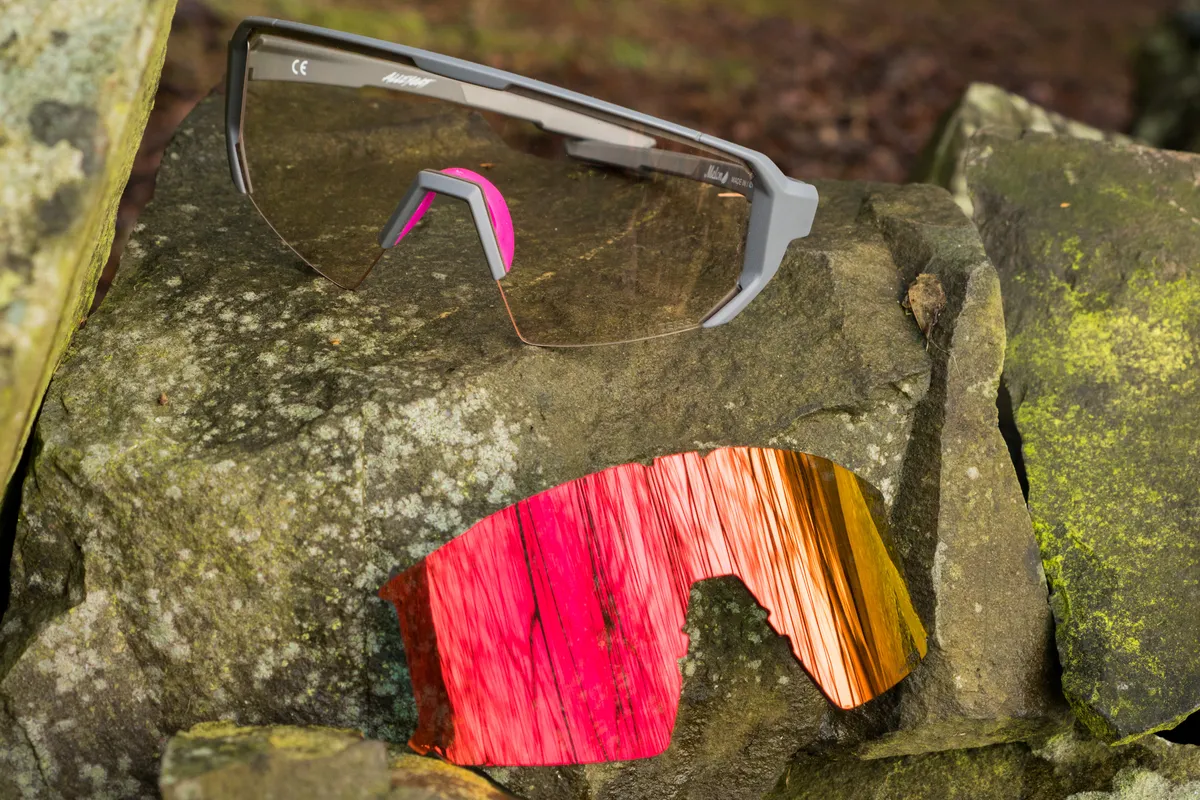
Whether you’ve decided to go with a clip-in insert or a direct glaze, you’ll need to decide on a lens tint for your new prescription cycling glasses.
Lens tint affects how much light passes through the lens, and certain tints perform better in different conditions.
Rose and amber tints, for example, can improve visual acuity in overcast conditions, while clear lenses work best in low light.
Generally speaking, the brighter it is, the darker the tint you’ll need.
In order to pick the right tint, give some careful consideration to your local weather and what conditions you’re likely to encounter the most. If you live somewhere with changeable conditions, a photochromic lens (light reactive) may be the best option.
How to choose a frame

Frame design dictates how the glasses feel on your face, how air passes over them and the overall aesthetic. Much of it is down to personal preference, and there are a few key styles to consider.
Full-frame glasses feature a frame that runs all the way around the lens or lenses. This provides a good degree of protection for the lens, but can limit the field of view somewhat.
Half-frame glasses have the lens or lenses mounted to a strip of plastic that runs across the brow (or under the eyes in the case of some styles, such as the Oakley Flight Jacket). This allows for a wider field of view and lighter weight than a full frame.
There are also frameless glasses, where the arms connect directly to the lens. Unfortunately, the only way to make these work as prescription glasses is to have an insert, which is what Smith has done with its Ruckus and Reverb models.
Where to buy prescription cycling glasses
Most brands that offer prescription cycling glasses will sell them directly from their websites, but this isn’t much use if they don’t ship to your country of residence.
RxSport is the biggest retailer in the UK when it comes to prescription sports eyewear, bringing brands such as Oakley, Rudy Project, Smith and POC together under one proverbial roof.
In the USA, the same can be said of the confusingly similarly named SportRx.
Many high-street opticians will also offer prescription sports glasses.
Which brands make prescription cycling glasses?

Rudy Project, uvex, Oakley and Bollé are the main brands that produce prescription cycling glasses.
Many other brands, such as Smith, produce inserts that are compatible with their glasses.
The two retailers linked above, or your local optician, are the best port of call if you are looking for a custom insert to suit your preferred sunnies.
How much do prescription cycling glasses cost?
You should expect to pay more for a pair of prescription cycling glasses than you would for a standard pair.
The lenses have to be manufactured to your specification and then mounted in the frame or insert by a specialist.
This drives the price up, while also increasing lead times. Generally, you can expect to pay between £150 and £400 for a good pair of prescription cycling glasses. Wait times vary from a few days to several weeks.
How to clean prescription cycling glasses

Cleaning direct-glazed prescription cycling glasses is no different to cleaning any other type of glasses. Simply use the lens cloth provided to give them a wipe on a regular basis. If they get really dirty, you can use a special lens-cleaner spray to remove the grime without damaging the lens.
Warm, soapy water can be used to clean the frame, but this can be done less frequently.
Cleaning clip-in inserts is more arduous. Here, there are two sets of lenses: those of the glasses and those of the insert. The insert should be removed from the frame according to the manufacturer’s instructions and each lens should be cleaned in the same manner as described above.
Regular and proper cleaning of your prescription cycling glasses will increase their lifespan by reducing the risk of micro-scratches caused by grit and debris.
